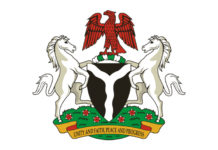The oil boom of the 1970s spelt doom for the Nigerian economy especially the agricultural sector, which is the substructure of the country’s economy. With the discovery of oil, efforts were diverted from harnessing the potentialities of other sectors; the situation unfortunately turned the country to mono-economy in spite of her vast agricultural and natural resources. It would be recalled that prior to the discovery of oil at Oloibiri in 1956, agriculture was the mainstay of the Nigerian economy, even at that there were mineral resources in large deposit across the country untapped. Successive administrations spent efforts on the downstream sector to the detriment of other viable sectors.
The economic diversification agenda of the incumbent administration of Muhammadu Buhari is seriously challenged by insecurity occasioned by activities of insurgents, armed bandits and other criminal elements, whose heinous acts have caused people tales of woes. In agriculture for instance, many farmers fled vast arable farmlands due to insurgency and other acts of terrorism. Regrettably, the activities of these criminals have further plunged the agricultural sector into a disheartening state. Consequently the adverse effect of the foregoing on the teeming populace is scarcity of food and hike in prices of food stuff in the market, thereby making it difficult for an average Nigerian to afford one square meal a day.
This is not in any way isolated from the numerous adverse effect of the Covid-19 pandemic that broke out in the wake of the year 2020 which grounded the world economy. This compounded the challenges of the agricultural sector amongst others. A United Kingdom based think-tank, the Institute of Development Studies (IDS) in its report placed Nigeria as the second poorest country in food affordability in the world. In the same vein, the 2020 Global Hunger Index listed Nigeria among the top 10 countries that is ravaged by hunger in the world.
However the current state of the economy could be savaged through the deployment of the instrumentality of geospatial technology in the agriculture sector. This would not only boost food productivity but will also create employment thereby raising the standard of living and largely contributing to the socioeconomic growth of the country.
The application of geospatial data in farming provide farmer with evidence-based data needed for making land use decisions; this is known as precision farming. It involves mapping of a proposed farmland to determine its composition, textures, features and viability. This way, farmers would not be engaged in what I would call blind farming which could be tantamount to gambling but would work with data that will give them definite direction.
Agricultural mapping is done using the satellite and other equipment such as the Unmanned Aerial Vehicle (UAV) such as the drone to capture multispectral imagery as it analyses and visualizes the agricultural environment. This is converted to data which help farmers to conduct crop forecasting and manage their agriculture production. The result of this is increased in production and reduction in costs as the acquired data enable better management of land resources through accurate mapping of geographic and geologic features of farmlands. It helps farmers to project current and future uncertainties in precipitation, temperature, crop output and so on.
To tackle the problem of food security headlong and to enhance food production it is important for farmers to know the type of soil and the terrain of the land they are proposing or plan to cultivate to ascertain its composition in term of nutrient contents. It is essential for farmers to know which crops should be planted where and how to maintain soil nutrition so that plants are best benefited.
It is obvious that the application of geospatial data in farming will not only help farmers in making informed decision which could in turn lead to greater agriculture output but also in curtailing wastage of capital and other resources caused by flood if farmers farm on flood prone areas, but with geospatial data such problem could have been detected and avoided.
With the use of geospatial data, farmers can also make use of appropriate fertilizer, treatment of pest and curb invasion of weeds for sustainable planning. Geospatial data no doubt has the capacity of boosting the agricultural sector towards improving the standard of living of Nigerians, alleviate poverty, ensure food security, create buoyant markets for expansion of industries and social services and eventually make significant contributions to national growth, and sustainable socioeconomic development.
To achieve the foregoing, there is a need for a strong synergy between the Federal Ministry of Agriculture and Rural Development (FMARD) and the Office of the Surveyor General of the Federation (OSGoF), which is the apex mapping agency of the country, saddled with the statutory and constitutional responsibility of providing the requisite geospatial information needed by various sectors in the Country. These two reputable establishments have the skills and expertise require to take Nigeria off the list of hunger ravaged countries and make her occupies a place of pride in the committee of nations. This is the utmost desire of the present administration in line with the demands of the Sustainable Development Goals (SDGs). The second of the SDGs is to end hunger, achieve food security and improve nutrition and promote sustainable agriculture.
Fajoye Morenike Victoria
Press and Public Relations Unit of OSGoF, Abuja.





